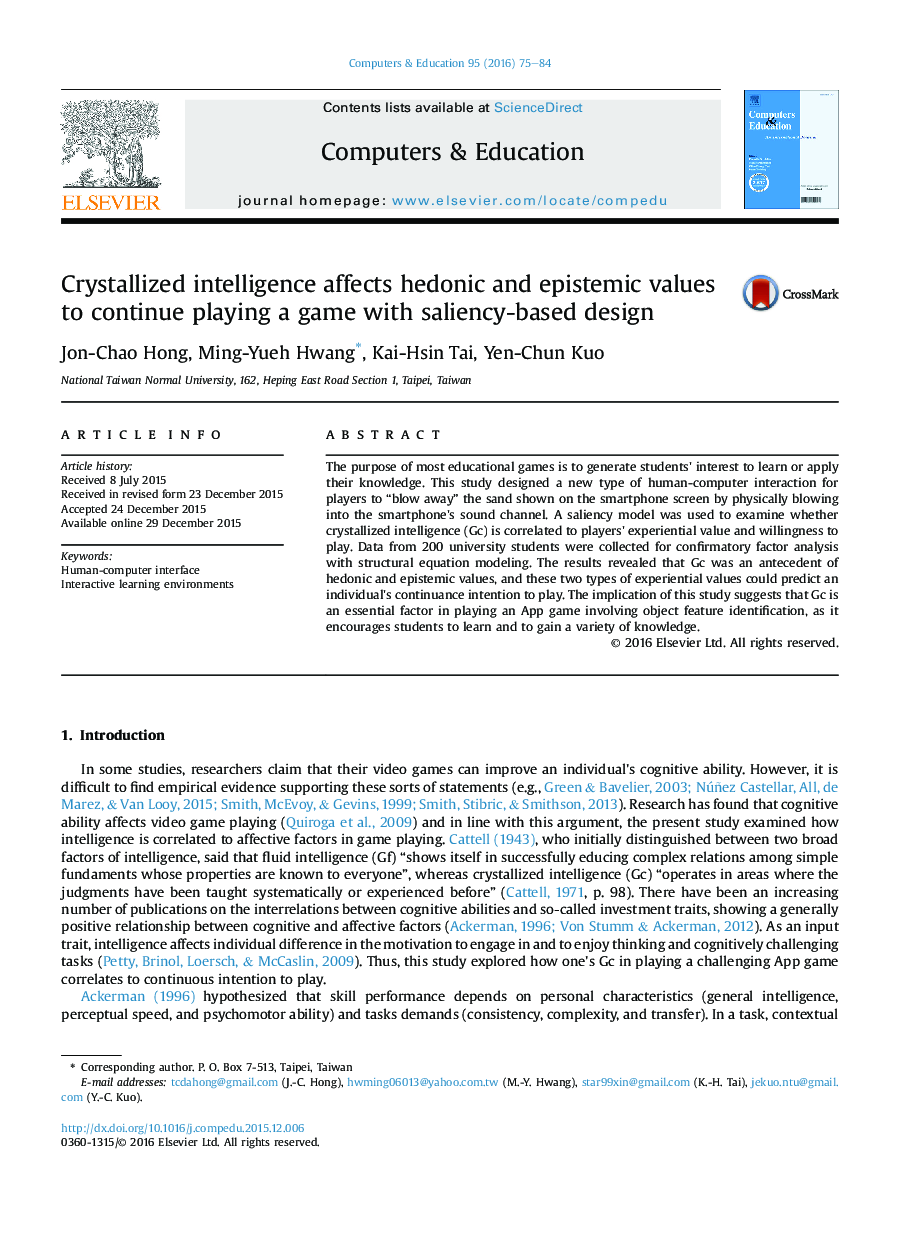| Article ID | Journal | Published Year | Pages | File Type |
|---|---|---|---|---|
| 6834896 | Computers & Education | 2016 | 10 Pages |
Abstract
The purpose of most educational games is to generate students' interest to learn or apply their knowledge. This study designed a new type of human-computer interaction for players to “blow away” the sand shown on the smartphone screen by physically blowing into the smartphone's sound channel. A saliency model was used to examine whether crystallized intelligence (Gc) is correlated to players' experiential value and willingness to play. Data from 200 university students were collected for confirmatory factor analysis with structural equation modeling. The results revealed that Gc was an antecedent of hedonic and epistemic values, and these two types of experiential values could predict an individual's continuance intention to play. The implication of this study suggests that Gc is an essential factor in playing an App game involving object feature identification, as it encourages students to learn and to gain a variety of knowledge.
Related Topics
Social Sciences and Humanities
Social Sciences
Education
Authors
Jon-Chao Hong, Ming-Yueh Hwang, Kai-Hsin Tai, Yen-Chun Kuo,
